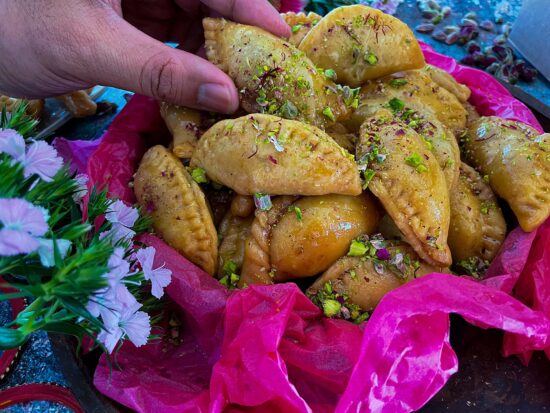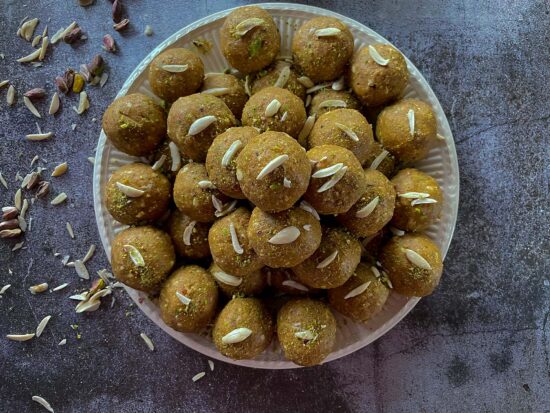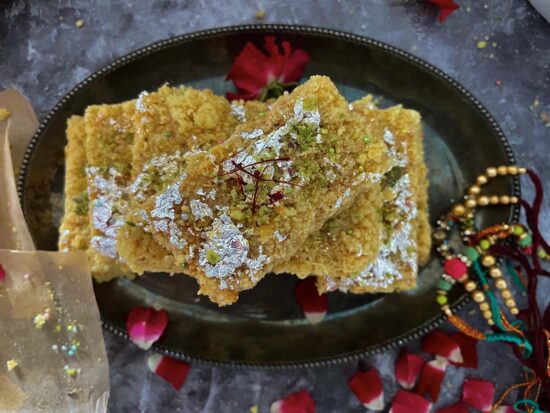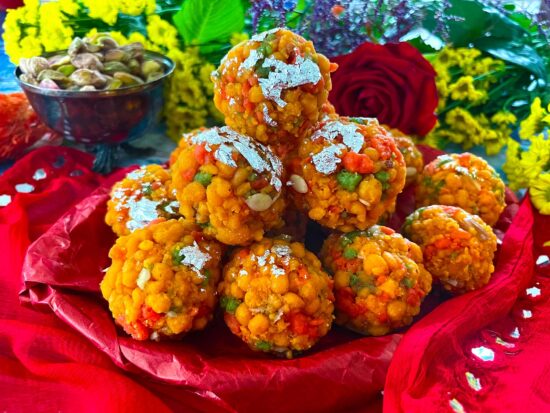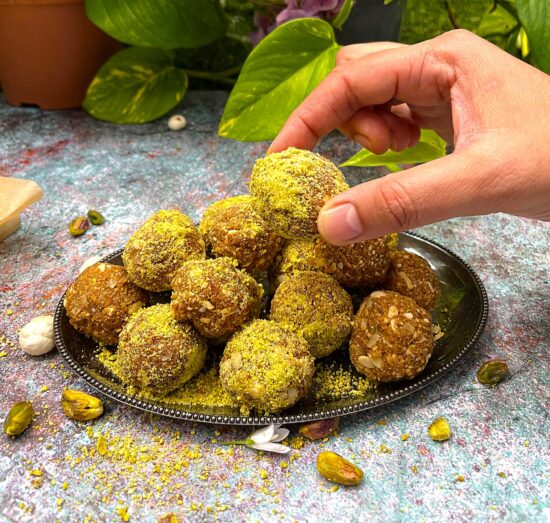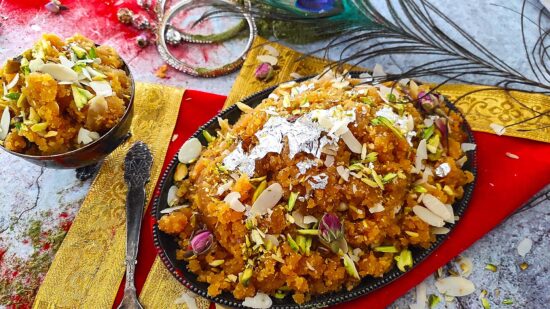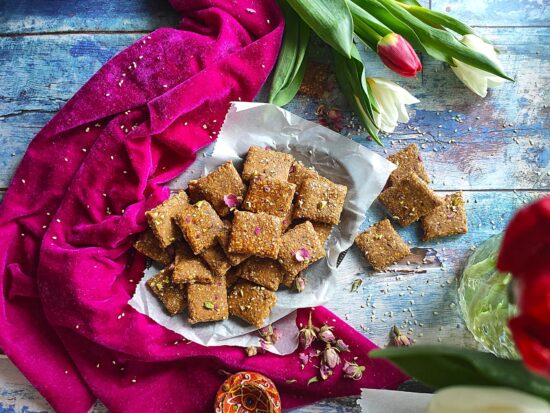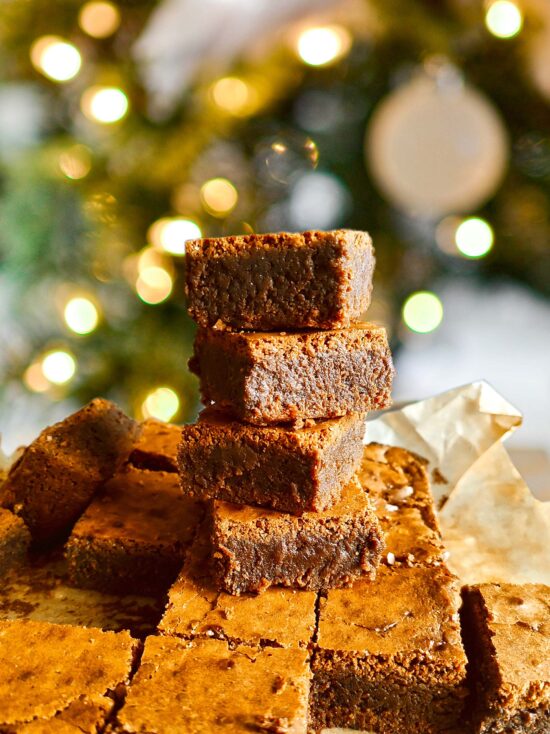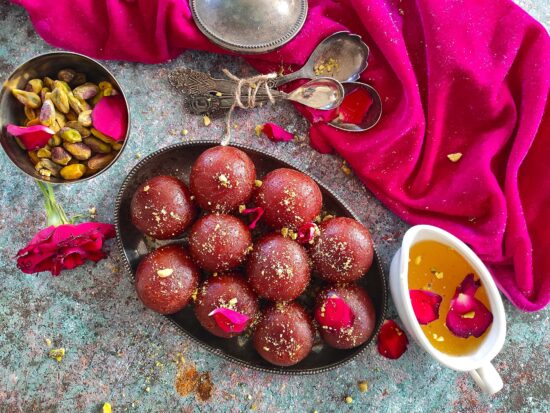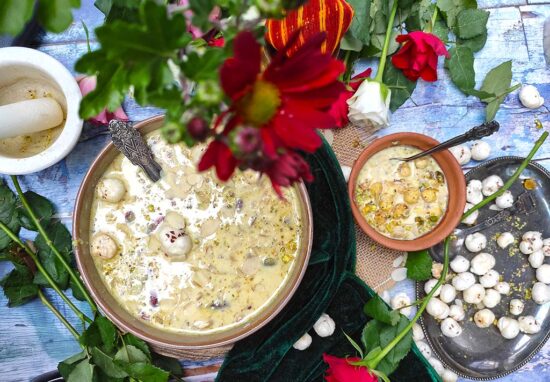Gujiya is a traditional Indian sweet made at the festival of colours – Holi. It is a fried pastry. That stuffed with khoya (mawa), dry fruits, saffron, coconut, and sugar.
A crescent-shaped pastry filled with all the rich flavourful goodies like coconut, sugar and nuts. In the traditional ones, it is sweetened with a coat of sugar glazing.
These mawa Gujiya are the perfect festive treat, the addition of stevia makes them so special and healthier!
Nothing makes Holi complete like this homemade Gujiya. This recipe packed with the goodness of coconut and a delicious mawa filling and exotic dry fruits and saffron. This crispy and flaky deep-fried turnover pastry is a popular North Indian treat made during the festive season.
One bite of these hand-pie size sugarfree Gujiyas will leave you craving for more! Plus, these Gujiyas make the perfect festive gift to give to friends and family.
The sweet filling in the Gujiya recipe varies insignificantly across India, and it even goes by many different names, including:
- Karanji in Maharashtra. This similarly shaped Gujiya is stuffed with a coconut filling that contains no mawa.
- Ghughra in Gujarat
- Nevri in Goa
- Kajjikaya in Andhra Pradesh and Karnataka, and
- Purukiya in Bihar.
These small sweet delicacies, which are crisp and soft on the top crust, and filled with a yummy stuffing of mava, is a thing to die for. I take a lot of pride in Gujiyas I make, and I am hoping that my mava or khoya Gujiya recipe is something that a Gujiya lover will enjoy.
Make these Gujiyas during Holi (festival of colours), Diwali or any occasion, and these Gujiyas won’t disappoint you.

